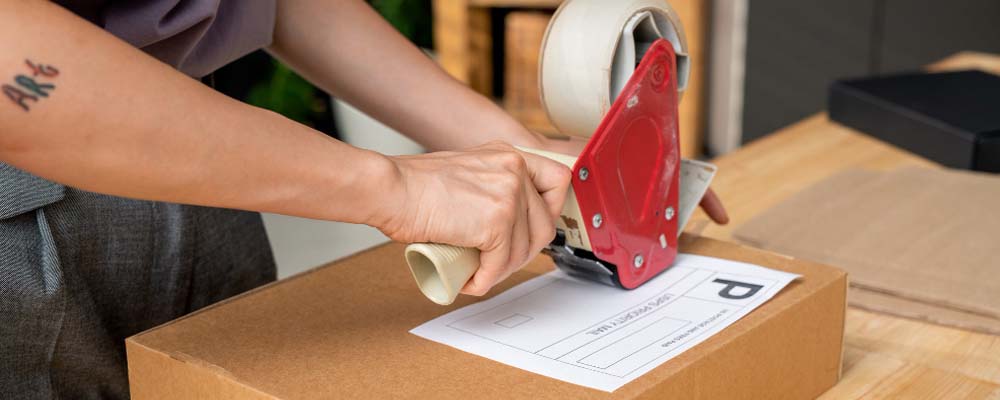
Shipping to the United States can be a daunting task for many businesses. With so many regulations, costs, and logistical challenges, it’s easy to feel overwhelmed. But don’t worry, we’ve got you covered! Whether you’re a freight forwarding company, logistics provider, importer, exporter, customs broker, manufacturer, producer, or e-commerce business, this guide will provide you with essential tips and insights to make your shipping process as smooth as possible.
Key Considerations for Shipping to USA
Understanding the key considerations for shipping to the USA can save you a lot of time and hassle. First, ensure that you know your product’s classification. Each item falls under a specific category in the Harmonized Tariff Schedule (HTS), which determines the duty rate. Familiarize yourself with these classifications for accurate declaration.
Secondly, be aware of the Incoterms (International Commercial Terms) that define the responsibilities of buyers and sellers for the delivery of goods. Common Incoterms include CIF (Cost, Insurance, and Freight) and FOB (Free on Board). Understanding these terms can prevent misunderstandings and disputes.
Lastly, consider the shipping method that best suits your needs. Air freight is faster but more expensive, while ocean freight is cost-effective for bulky shipments but takes longer. Weigh the pros and cons of each method based on your budget and timeline.
 Rules for Packaging Your Parcel
Rules for Packaging Your Parcel
Proper packaging is crucial when shipping to the USA. First, use sturdy, high-quality materials to protect your items during transit. Cardboard boxes, bubble wrap, and packing peanuts can provide the necessary cushioning to prevent damage.
Second, label your packages clearly and accurately. Include the recipient’s full address, contact information, and any special instructions. Proper labeling ensures that your parcel reaches its destination without any hiccups.
Finally, adhere to the size and weight restrictions imposed by the carrier. Exceeding these limits can result in additional fees or delays. Check the carrier’s guidelines beforehand to avoid any surprises.
Products That Cannot Be Exported to USA
Not all products are allowed to be shipped to the USA. Prohibited items include hazardous materials, certain food products, and counterfeit goods. Shipping restricted items can lead to severe penalties or even confiscation of your goods.
Additionally, some items require special permits or licenses to enter the USA. Firearms, pharmaceuticals, and alcoholic beverages fall under this category. Ensure you have the necessary documentation to comply with US import regulations.
Lastly, be mindful of trade restrictions and sanctions. The USA has specific trade policies that prohibit or limit transactions with certain countries and entities. Always stay updated on these regulations to avoid legal complications.
 Costs of Shipping to USA
Costs of Shipping to USA
Shipping to the USA can be costly, but understanding the factors that influence these costs can help you budget effectively. The primary cost components include freight charges, customs duties, and taxes.
Freight charges depend on the shipping method, package size, and weight. Air freight is generally more expensive than ocean freight, but it offers faster delivery times.
Customs duties are calculated based on the product’s classification in the HTS. Each item has a specific duty rate, which can significantly impact your total shipping cost.
Lastly, taxes such as Value Added Tax (VAT) or Goods and Services Tax (GST) may apply depending on the nature of the goods and their destination. Always factor in these costs to avoid any financial surprises.
How Long Does It Take to Get to USA?
 The delivery time to the USA varies depending on the shipping method. Air freight is the quickest option, typically taking 2-7 days. However, it is more expensive than other methods. If you’re in a hurry, air freight might be the best choice despite the expense.
The delivery time to the USA varies depending on the shipping method. Air freight is the quickest option, typically taking 2-7 days. However, it is more expensive than other methods. If you’re in a hurry, air freight might be the best choice despite the expense.
Ocean freight, on the other hand, is more economical but takes longer, usually between 20-40 days. This method is ideal for large, bulk shipments that do not require immediate delivery.
Additionally, the processing time at customs can affect the overall delivery timeline. Delays in customs clearance can add a few days to your shipment. Proper documentation and compliance with regulations can help expedite this process.
Customs Regulations
Navigating customs regulations is one of the most challenging aspects of shipping to the USA. First, ensure that all your paperwork is in order. This includes the commercial invoice, packing list, and any required permits or licenses. Accurate documentation is crucial for smooth customs clearance.
Second, be aware of the customs duty rates applicable to your products. These rates are determined by the product classification in the HTS. Misclassification can lead to penalties or delays, so it’s essential to get it right.
Lastly, consider working with a customs broker. These professionals can guide you through the complex customs process, ensuring compliance with all regulations and helping you avoid any potential pitfalls.
USA Holidays to Keep in Mind
Shipping during holidays can be tricky due to increased demand and potential delays. Major US holidays like Christmas, Thanksgiving, and Independence Day can affect shipping schedules and lead to longer delivery times.
Additionally, some states observe local holidays that may not be recognized nationwide. It’s essential to be aware of these dates to plan your shipments accordingly.
To avoid delays, try to ship well before major holidays. This ensures that your parcels reach their destination on time, even if there are unforeseen delays.
 Conclusion
Conclusion
Shipping to the USA may seem complicated, but with the right knowledge and preparation, it can be a seamless process. From understanding key considerations and packaging rules to navigating customs regulations and being mindful of holidays, every step is crucial for successful delivery.
By following the tips and insights provided in this guide, you can ensure that your shipments to the USA are efficient, cost-effective, and compliant with all regulations. For personalized assistance and expert advice, consider consulting with a logistics professional or customs broker.
Ready to simplify your shipping process? Contact us and take your first step towards hassle-free shipping today!




 Rules for Packaging Your Parcel
Rules for Packaging Your Parcel Costs of Shipping to USA
Costs of Shipping to USA Conclusion
Conclusion



